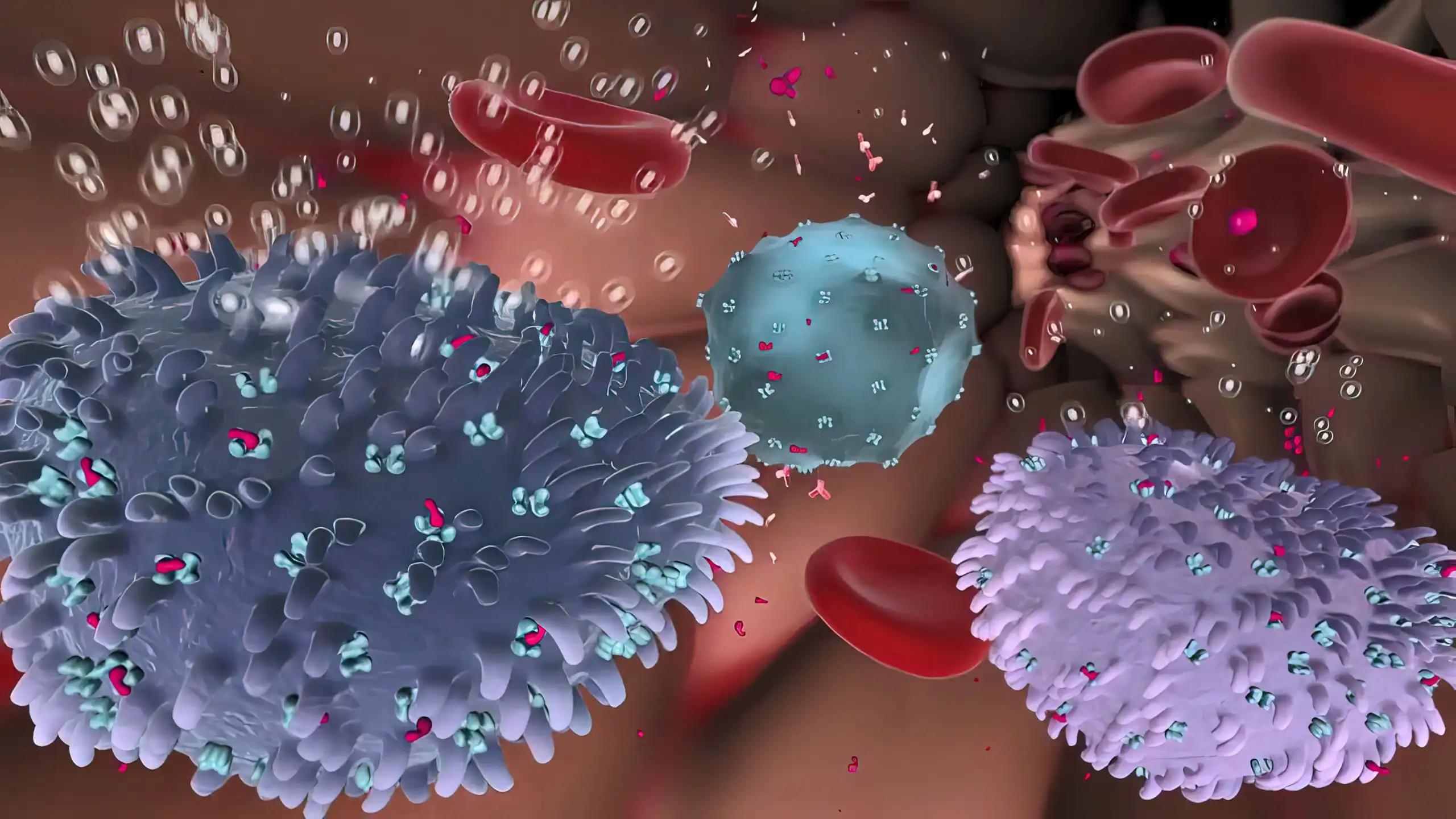KEY TAKEAWAYS
- An observational study aimed to assess the feasibility of using multiple assays to detect MRD in LA-HNSCC pts after definitive RT/CRT.
- RFS was estimated using Kaplan-Meier, and associations of ctDNA or HPV DNA with RFS were assessed using a log-rank test. Assays were compared with the Spearman correlation.
- The study found HPV DNA and ctDNA can be detected in LA-HNSCC pts before and after treatment, and RaDaR is more sensitive than CAPP-seq at detecting MRD with a significant lead time.
Molecular Residual Disease (MRD) detection in locally advanced head and neck squamous cell carcinoma (LA-HNSCC) patients(pts) after definitive radiation therapy/ chemoradiotherapy (RT/CRT) has not been reported but may predict relapse.
Researchers aimed to assess the feasibility of using multiple assays to detect MRD in LA-HNSCC pts after definitive RT/CRT.
The study enrolled high-risk LA-HNSCC pts undergoing curative treatment, including surgery with or without adjuvant therapy, radiation therapy (RT), or chemoradiotherapy (CRT). Plasma samples were collected at baseline (B), 4-6 weeks (FU1), and 8-12 weeks (FU2) after treatment. They utilized RaDaR, a personalized liquid biopsy assay targeting patient-specific somatic variants identified in whole exome sequencing (WES) from matched tumor tissue, to detect circulating tumor DNA (ctDNA) reported as estimated Variant Allele Fraction (eVAF).
The study also employed Cancer Personalized Profiling by deep sequencing (CAPP-seq) as a tumor-naive ctDNA assay, reporting mean Variant Allele Fraction (VAF). HPV sequencing (HPV-seq) was conducted for all pts, and digital PCR (dPCR) was used for p16+ pts to detect HPV DNA. Relapse-free survival (RFS) was assessed using Kaplan-Meier analysis and evaluated associations between ctDNA or HPV DNA and RFS using the log-rank test. They also compared the assays using Spearman correlation.
About 89 plasma samples from 35 pts were collected prospectively, and 32 pts with follow-up(FU) samples were evaluated, with 26 having both. The median age of these pts was 63 years (range 34-71). Most pts had stage III HPV+ cancer (16 out of 32, 50%) and received chemoradiotherapy (25 out of 32, 78%). None of the pts showed clinical or radiological residual disease at their second follow-up (FU2), with a median FU period of 18.3 months (range 5.1-25.9). There were 7 clinical relapses observed. RaDar was applied to 17 pts with matched tissue whole-exome sequencing (WES), including 6 who experienced a relapse. In 15 out of 17 pts (88%), circulating tumor DNA (ctDNA) was detected at baseline (B). The presence of ctDNA at baseline (B) was not found to be associated with recurrence-free survival (RFS) (P= 0.98), 2 pts relapsed within one year after RT/CRT and had detectable ctDNA (eVAF > 0.001%) in their FU2 samples. The time between the detection of ctDNA and relapse was 100 and 245 days, respectively. In 1 patient who relapsed more than one year after chemoradiotherapy, their FU1 sample had ctDNA levels close to the threshold for positivity (eVAF 0.0001%), and the lead time to relapse was 494 days. Pts who received CRT relapsed more than 500 days after their FU2 sample and had no detectable circulating tumor DNA (ctDNA). CAPP-seq was used in 29 pts, and they found that the mean VAF correlated with ctDNA levels at baseline (B) (r= 0.75), but this correlation was not observed at the FU stage. The presence of ctDNA at FU using CAPP-seq was not associated with RFS (P= 0.25).
In 32 pts, HPV-seq was applied, showing 100% specificity and sensitivity at baseline (B). Among the 15 pts with positive p16 status and FU samples, HPV DNA was detected in all 4 pts who experienced relapse and not in those who did not, predicting a shorter RFS (P< 0.01). dPCR detected HPV DNA in 2 out of 4 relapsed pts. The correlation between HPV-seq and dPCR was high at baseline (B) (r= 0.99) but lower at FU2 (r= 0.66).
The study found HPV DNA and ctDNA can be detected in LA-HNSCC pts before and after treatment, and RaDaR is more sensitive than CAPP-seq at detecting MRD with a significant lead time.
Source: https://ascopubs.org/doi/abs/10.1200/JCO.2023.41.16_suppl.6065
Clinical Trial: https://clinicaltrials.gov/study/NCT04599309
Enrique Sanz Garcia, Jinfeng Zou, Lisa Avery, Anna Spreafico, John Waldron, David Paul Goldstein, Aaron Richard Hansen, John Cho, John R de Almeida, Andrew Hope, Ali Hosni, Ezra Hahn, Bayardo Perez-Ordonez, Zhen Zhao, Christopher Gareth Smith, Yangqiao Zheng, Nitzan Rosenfeld, Nittusha Singaravelan, Scott Victor Bratman, and Lillian L. Siu. DOI: 10.1200/JCO.2023.41.16_suppl.6065 Journal of Clinical Oncology 41, no. 16_suppl (June 01, 2023) 6065-6065.



